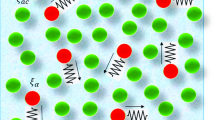Abstract.
The concern is with the properties of stochastic differential equations (SDEs) describing the motion of particles in 3 dimensional space, on the sphere or in the plane. There is consideration of the case where the drift function comes from a potential function. There is study of SDEs whose parameters are periodic in time. These are useful for incorporating circadian rhythm in the behavior. The cases of a seal in a frozen lake in Alaska, an elephant seal migrating a great distance in the Pacific Ocean and of a group of "free-ranging" elk in a reserve in Oregon are referred to. For the elk nonparametric estimates of the drift and variance terms of an SDE model are discussed and evaluated and the fit of the model assessed. One issue is how to include explanatories, beyond location and time, in the model. A number of questions motivated by the wildlife motion concerning diffusion processes of the type considered are posed at the end of the paper.
Similar content being viewed by others
Author information
Authors and Affiliations
Additional information
Received: 25 April 2002
About this article
Cite this article
Brillinger, D., Preisler, H., Ager, A. et al. Employing stochastic differential equations to model wildlife motion. Bull Braz Math Soc 33, 385–408 (2002). https://doi.org/10.1007/s005740200021
Issue Date:
DOI: https://doi.org/10.1007/s005740200021




